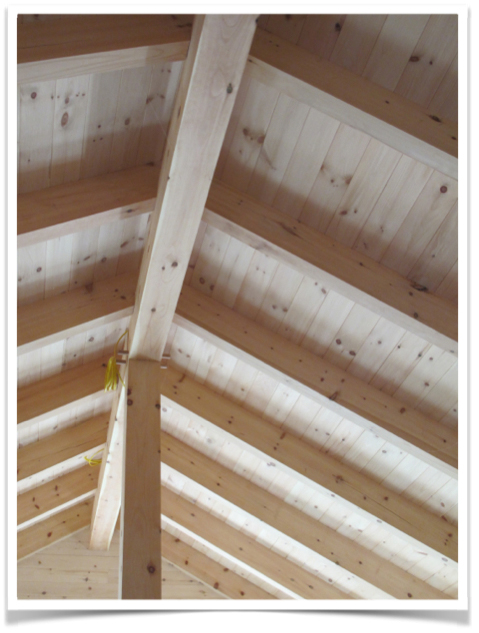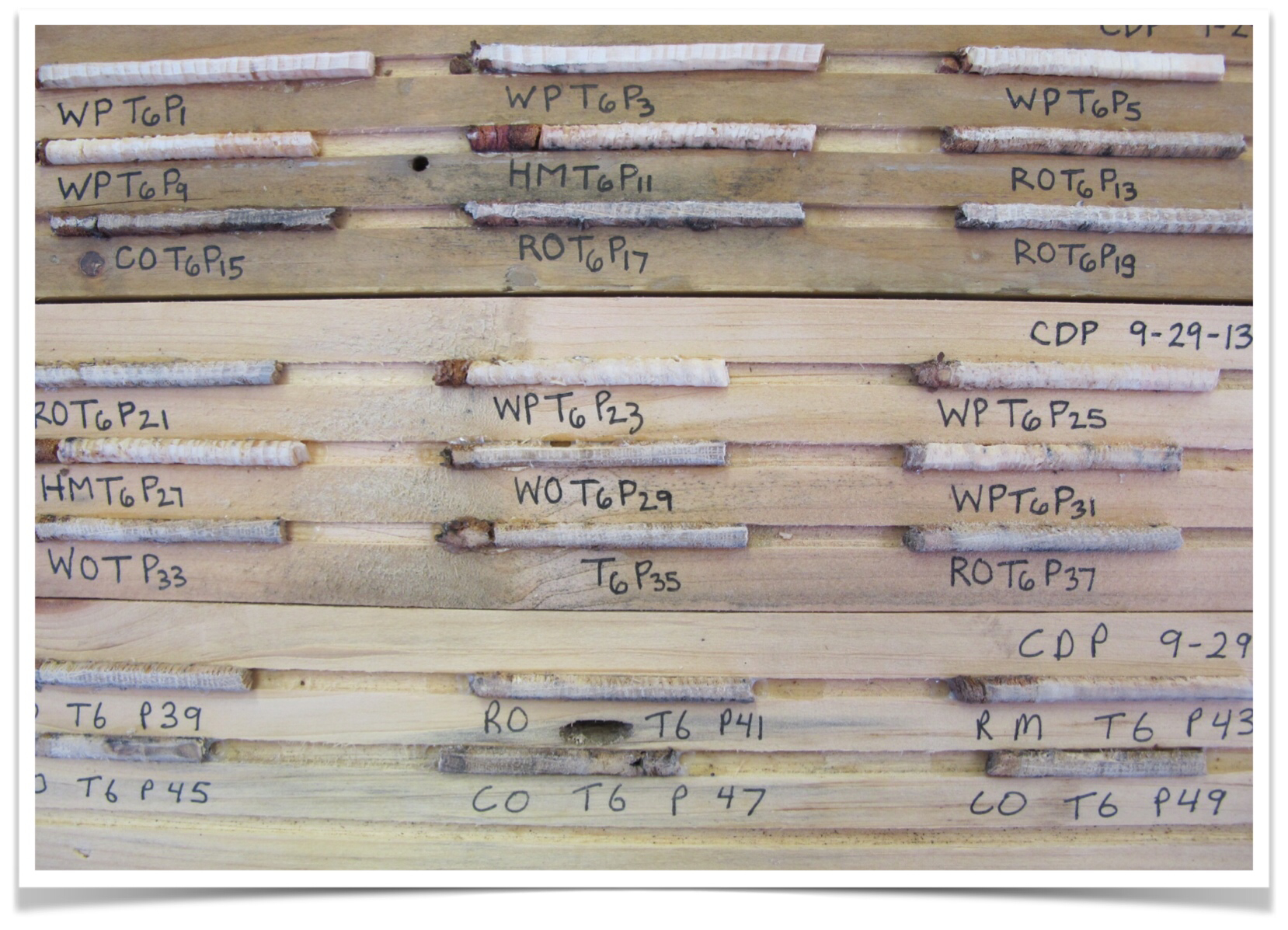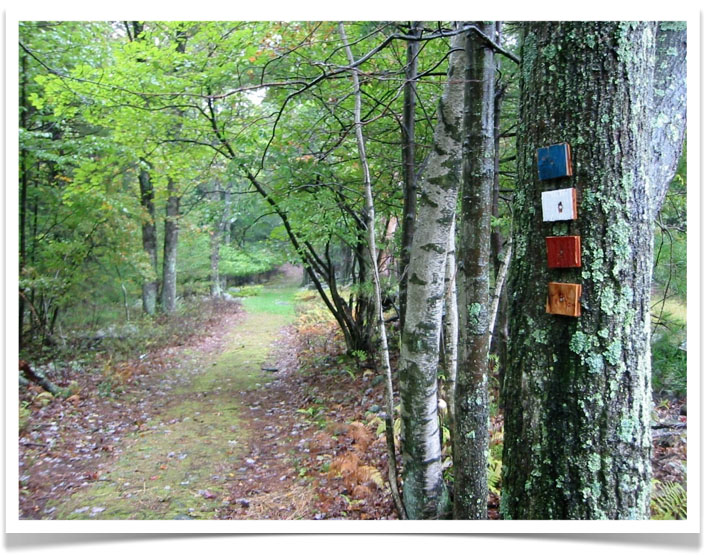Sandy Damage at Deerpark
 Monday, May 4, 2015 at 9:52AM
Monday, May 4, 2015 at 9:52AM 
Spent a wonderful weekend at Camp Deerpark (see Camp Deerpark Forestry and Cabins at Camp Deerpark) working on some forestry stuff (thx, CDFST). Some of this was directed towards the large blow-downs (shown above) caused in 2012 by Hurricane Sandy. What a mess. The forest was really torn up and we lost a lot of trees. We were able to salvage some of the white pine trees that blew down and saw them up for boards for the cabins [NOTE: These will be finished soon and I will post some pictures].
The residual hardwoods seem to be appreciating the increased light levels. As is shown below in a core from a red oak growing in one of the blow-down areas, the post-Sandy growth rings (indicated by the red line) are considerably larger than those produced before the storm. Every cloud has a silver lining, I guess.











